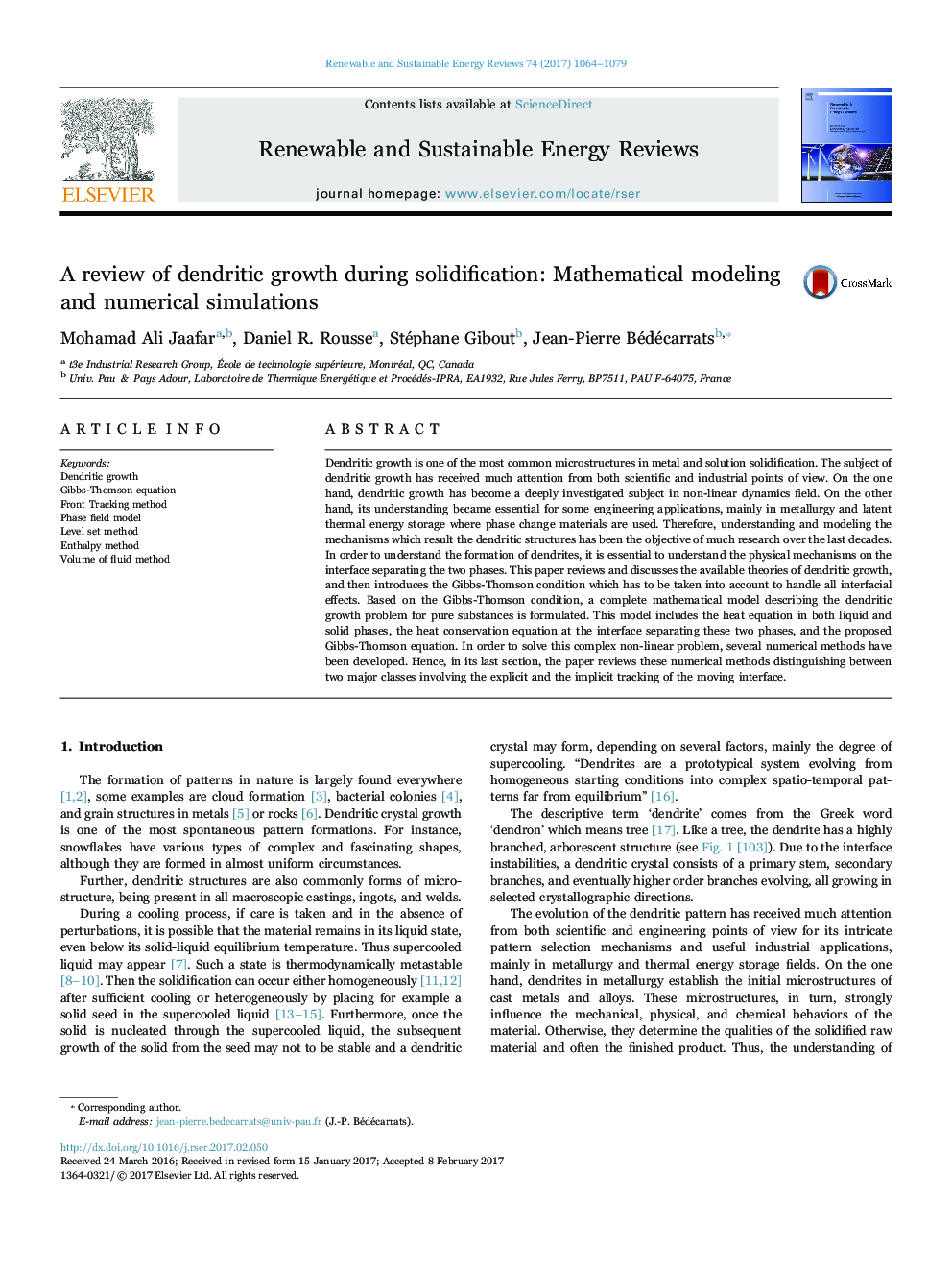| Article ID | Journal | Published Year | Pages | File Type |
|---|---|---|---|---|
| 5483176 | Renewable and Sustainable Energy Reviews | 2017 | 16 Pages |
Abstract
Dendritic growth is one of the most common microstructures in metal and solution solidification. The subject of dendritic growth has received much attention from both scientific and industrial points of view. On the one hand, dendritic growth has become a deeply investigated subject in non-linear dynamics field. On the other hand, its understanding became essential for some engineering applications, mainly in metallurgy and latent thermal energy storage where phase change materials are used. Therefore, understanding and modeling the mechanisms which result the dendritic structures has been the objective of much research over the last decades. In order to understand the formation of dendrites, it is essential to understand the physical mechanisms on the interface separating the two phases. This paper reviews and discusses the available theories of dendritic growth, and then introduces the Gibbs-Thomson condition which has to be taken into account to handle all interfacial effects. Based on the Gibbs-Thomson condition, a complete mathematical model describing the dendritic growth problem for pure substances is formulated. This model includes the heat equation in both liquid and solid phases, the heat conservation equation at the interface separating these two phases, and the proposed Gibbs-Thomson equation. In order to solve this complex non-linear problem, several numerical methods have been developed. Hence, in its last section, the paper reviews these numerical methods distinguishing between two major classes involving the explicit and the implicit tracking of the moving interface.
Keywords
Related Topics
Physical Sciences and Engineering
Energy
Renewable Energy, Sustainability and the Environment
Authors
Mohamad Ali Jaafar, Daniel R. Rousse, Stéphane Gibout, Jean-Pierre Bédécarrats,
